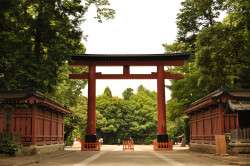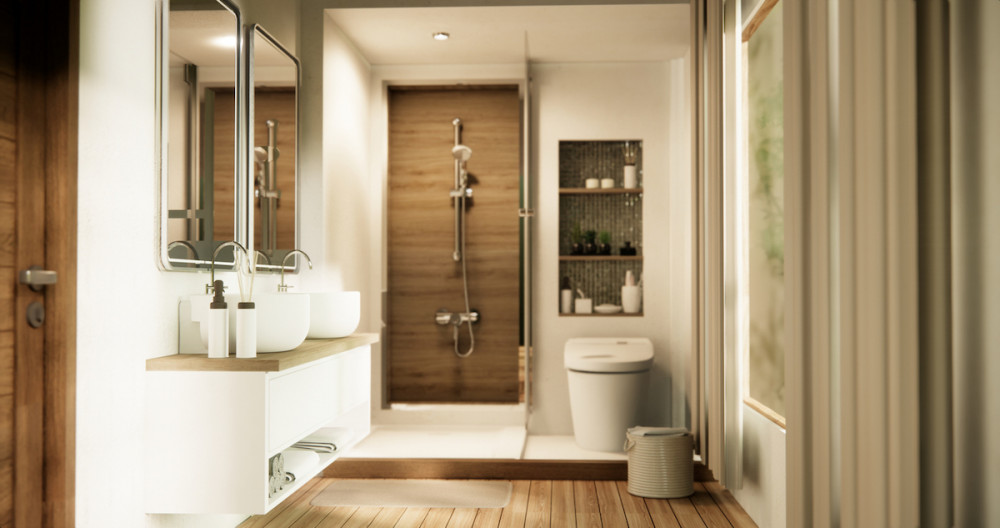
September 10, 2024
A Step-by-Step Guide on How to Clean a Japanese Bathroom
How to clean a Japanse bath, shower and more
Japanese bathrooms are another cultural marvel symbolizing cleanliness in the country, mainly because of the modern technology and functionality embedded in these washrooms. If you have or want a Japanese-style shower room, you might already know a few ways to clean and maintain it to stay spotless for years. From eradicating mold to keeping metallic taps gleaming and making the most of advanced washlets, here’s a guide to maintaining a clean Japanese bathroom.
Looking for more Japanese housekeeping tips? Check out our step-by-step on doing your laundry in Japan or our guide to cleaning tatami mats.
Understanding Japanese Bathroom Design
Japanese bathrooms often differ significantly from their Western counterparts. They typically feature separate areas for the toilet and bathing, emphasizing cleanliness and efficiency. Key elements include:
Deep Bathtubs:
Japanese bathtubs are deeper than Western ones, and designed for comfort while following traditional bathing practices.
High-Tech Toilets:
Also called washlets (ウォシュレット), these are toilets containing a bidet system, self-heated seats and automatic opening/closing of the toilet seat.
Floor-Level Drains:
These drains are commonly found in most Japanese bathroom floors to accommodate wet areas and for ease of cleaning.
Metal Taps and Fixtures:
Including stainless steel or brass, they are complex in their construction and need proper care and maintenance to look shiny and work as expected.
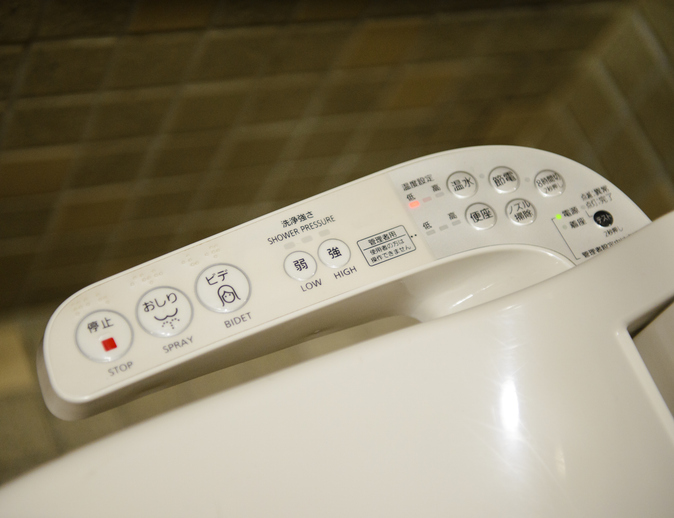
Essential Cleaning Supplies for Japanese Bathrooms
Gather these essential cleaning supplies to ensure your Japanese bathroom stays spotless:
Kabi Killer Spray (カビキラー):
A powerful mold remover suitable for tile grout, walls, and ceilings.
Suisou (水槽) Drain Cleaner:
Specifically designed to clear hair and debris from drains to prevent clogs.
Cleansui Bathtub Cleaner (クリンスイ 浴槽クリーナー):
Removes soap scum and dirt from bathtub surfaces without damaging materials.
Kao Magiclean Stainless Steel Cleaner (マジックリン):
Cleans and polishes stainless steel taps and fixtures without scratching.
Toyo Sink Cleaner (トーヨー シンククリーナー):
Restores brass and metal finishes, eliminating water spots and soap residue.
Shabondama Glass Cleaner (シャボン玉 ガラスクリーナー):
Ideal for streak-free cleaning of glass partitions and mirrors.
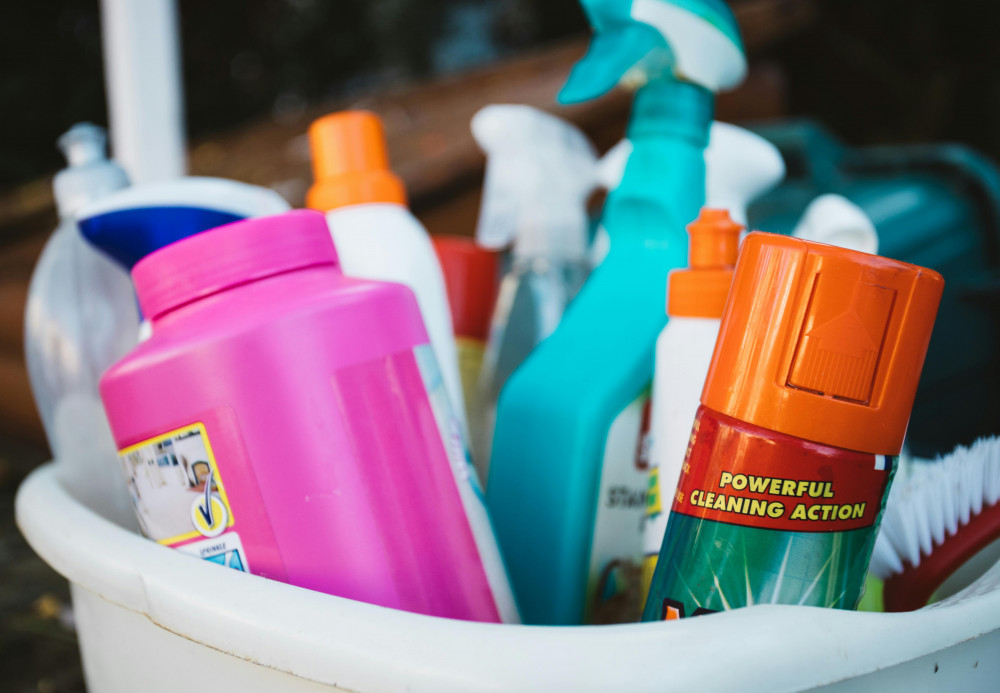
Step-by-Step Guide on How to Clean a Japanese Bathroom
Dehumidifier (除湿機 joshitsuki): Helps maintain optimal humidity levels in bathrooms, preventing mold growth.
Here’s a step-by-step guide to cleaning a Japanese bathroom:
1. Mold Prevention and Removal
Mold thrives in damp areas, making bathrooms a common target. Follow these steps to prevent and remove mold effectively.
Regular Ventilation:
Open windows or use a ventilation fan after bathing.
Kabi Killer Application:
Kabi Killer should then be sprayed on the usual mold areas including the tile grout, corners, and ceilings. Let it stay according to the product’s instructions before applying a brush.
Dehumidifier Use:
Ensure that the dehumidifier is consistently used, especially during the humid seasons to ensure that the moisture level does not rise to the extent of causing mold formation.
2. Cleaning Floor-Level Drains
Floor-level drains in Japanese bathrooms require periodic cleaning to prevent clogs and odors.
Suisou Drain Cleaner Application:
Suisou Drain Cleaner should then be poured into the drain and allowed to sit for the stipulated time. Turn on the hot water to get rid of dirt and every bit of the remaining residue of the chemical.
3. Maintaining Deep Bathtubs
Japanese bathtubs are designed for deep soaking and require special care to preserve their cleanliness.
Cleansui Bathtub Cleaner Use:
Depending on the surface of the bathtub that you want to clean, it is advisable to apply Cleansui Bathtub Cleaner on it. Use a soft sponge or cloth to wash it while scrubbing soft enough to make sure the soap and dirt are washed off.
Baking Soda and Vinegar Solution:
For stubborn stains, make a paste using baking soda and vinegar, rub it on the stained parts of your bathtub, and then wash it with water after a few minutes.
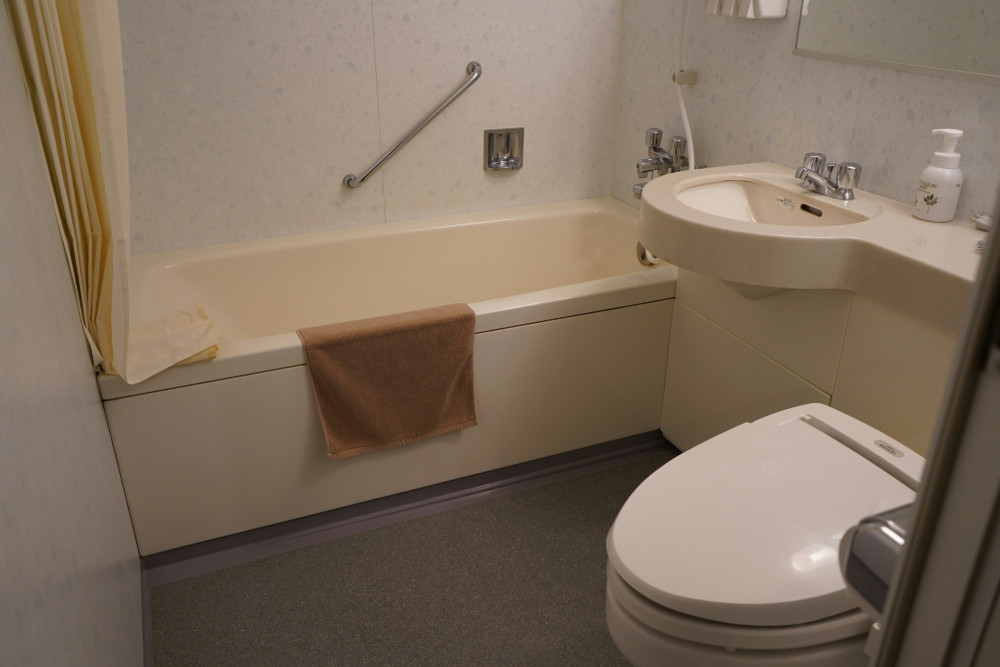
4. Maintenance of Metal Taps and Fixtures
To maintain the shine and functionality of metal taps and fixtures in Japanese bathrooms:
Kao Magiclean Stainless Steel Cleaner Application:
Take a soft cloth then dip it in a small amount of Kao Magiclean. To remove water spots and bring back the shine on stainless steel taps and fixtures, polish in circular motions using a very light touch.
Toyo Sink Cleaner for Brass Fixtures:
Toyo Sink Cleaner is considered suitable for use on brass or other sorts of metal surfaces. Rub it on, allow it to set for some time, and then wipe the surface with a mop or a piece of fabric.
5. Additional Cleaning Tips
Toilet Seat Sanitizer
To prevent a washlet or any high-tech toilet from developing germs and bacteria it is important to use a specialized toilet seat sanitizer.
Shabondama Glass Cleaner for Mirrors
Make sure to apply the spray Shabondama Glass Cleaner more on the mirror and glass partitions. Do not use soft sponges to clean to avoid scratching the surface of the windows.
6. Regular Maintenance Routine
Weekly Cleaning
Set aside time each week to clean your Japanese bathroom.
Monthly Inspections
Burnwood fixtures must be thoroughly inspected for instances of mold and damage on drains, fixtures, and grout. Address problems when they are minor to prevent them from becoming bigger issues.
Final Tips and Takeaways
Sanitation of a Japanese-style bathroom is a rather delicate process; it requires specific cleaning aids to ensure its efficiency. These guidelines on how to clean a Japanese bathroom will help you to maintain your bathroom as a clean, healthy and relaxing place to be in without much effort. In this regard, cleaning not only helps in increasing the lifespan of the fixtures and the surface but also helps in maintaining a healthy environment essential for relaxation and care if you love taking your time showering, bathing or applying evening skincare products. Happy cleaning!
So you’ve finished cleaning, now what? If you find yourself puzzled by the trash-disposal system, you’re not alone. Read one expat’s experience recycling in Japan.




